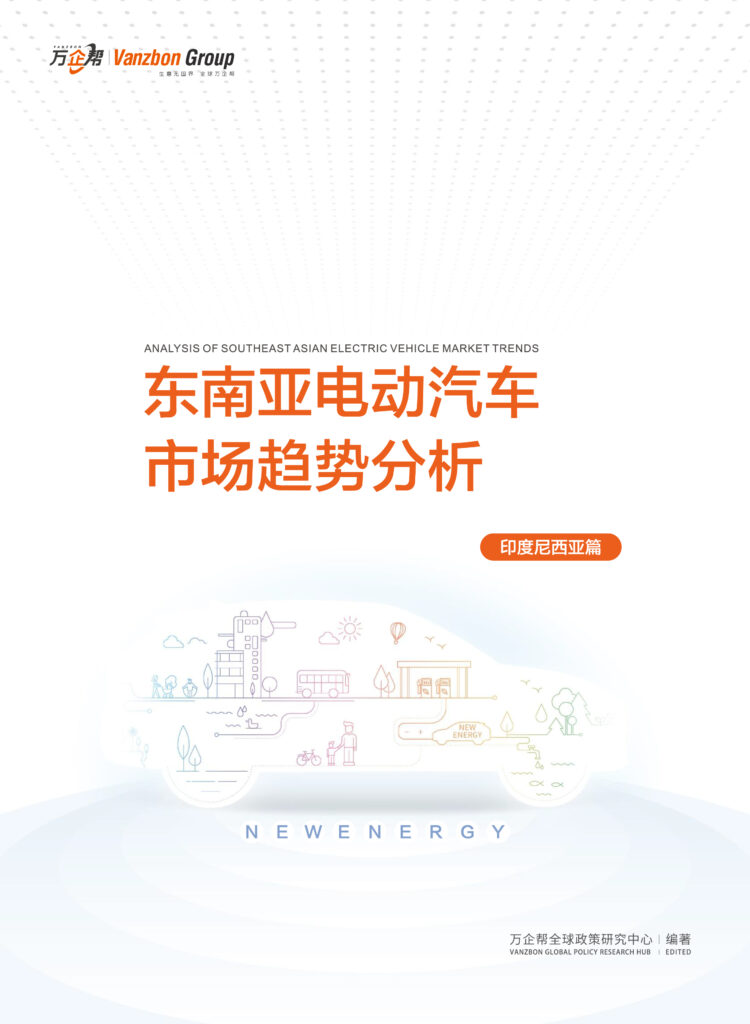With the rapid development of technology, Japan’s digital payment and e-commerce sectors are experiencing unprecedented changes. For businesses and investors planning to enter the Japanese market, it is crucial to have an in-depth understanding of the current status and trends in this field. This article will comprehensively introduce common digital payment methods and major e-commerce platforms in Japan, and provide detailed usage guidance for Japan-specific payment systems, aiming to help overseas businesses and investors better adapt to Japan’s digital economy environment.
Overview of Digital Payments in Japan
1.1 Development History of Digital Payments
Japan’s digital payment system has a unique development history. As early as the late 1990s, Japan began promoting contactless IC card payment systems. This payment method was initially mainly used in public transportation and later gradually expanded to retail, catering, and other industries. After entering the 21st century, with the popularity of smartphones, mobile payments began to rise. However, compared to other developed countries, the penetration rate of digital payments in Japan was relatively low for a time.
This situation has changed significantly in recent years. To improve economic efficiency and reduce cash usage, the Japanese government has introduced a series of policies to encourage digital payments. For example, when the consumption tax was increased in 2019, the government introduced cashback incentives to encourage consumers to use digital payment methods. These policies have achieved noticeable results, with a substantial increase in the usage rate of digital payments.
According to statistics from the Ministry of Internal Affairs and Communications of Japan, the proportion of digital payments in Japan reached about 50% in 2023, a significant increase from about 20% in 2019. This change is reflected not only among young people but also in the gradually increasing use of digital payments among the elderly. It is expected that the proportion of digital payments in Japan will reach over 65% by 2025.
1.2 Main Types of Digital Payments
Digital payment methods in Japan can be broadly divided into three categories: contactless IC card payments, mobile payments, and online payments.
Contactless IC card payment is the earliest widespread digital payment method in Japan. This payment method uses cards with built-in IC chips, which only need to be lightly touched to a card reader to complete the payment. The most typical examples are transportation IC cards, such as Suica and PASMO. These cards can be used not only for public transportation but also in convenience stores, vending machines, and other places.
Mobile payments have experienced rapid development in Japan. They are mainly divided into two types: one is QR code-based payment methods, such as Alipay and Rakuten Pay; the other is NFC-based contactless payment, such as Apple Pay and Google Pay. These payment methods are usually bound to smartphone applications and are convenient to use.
Online payments are mainly used on e-commerce platforms. The main online payment methods in Japan include credit card payments, internet banking payments, and convenience store payments. In recent years, some emerging payment services such as Rakuten Pay and Line Pay have also gained a certain market share in the online payment field.
1.3 Digital Payment Market Landscape
The digital payment market in Japan is characterized by diversity, with various payment methods coexisting and fierce competition. According to a survey by the Ministry of Economy, Trade and Industry of Japan, as of 2023, the market share of major digital payment service providers in Japan is as follows: Rakuten Pay accounts for 20%, Alipay 15%, Line Pay 12%, PASMO series 10%, Suica series 8%, and other payment methods 35%.
It is worth noting that although internationally renowned payment giants like Alipay also have a certain market share in Japan, domestic payment services still dominate. This reflects Japanese consumers’ trust in local brands and also demonstrates the uniqueness of the Japanese payment market.
In terms of user groups, young people are the main force of digital payments. According to data from the Ministry of Internal Affairs and Communications, the usage rate of digital payments in the 18-34 age group exceeds 80%, while the usage rate among people over 65 has also reached about 30%. This indicates that digital payments have gained widespread acceptance in Japan and are penetrating across all age groups.
Detailed Introduction to Major Digital Payment Methods in Japan
2.1 Contactless IC Card Payments
Contactless IC cards are one of the most widespread digital payment methods in Japan. This payment method originated in the public transportation sector and gradually expanded to retail, catering, and many other industries. Currently, the main IC card payment brands in Japan include Suica, PASMO, and ICOCA.
Suica was initially launched by East Japan Railway Company and was mainly used for public transportation in Tokyo and surrounding areas. Now, the use of Suica has expanded nationwide and can be used in convenience stores, vending machines, some restaurants, and other places. Using Suica is very simple; you only need to lightly touch the card to the card reader to complete the payment. Users can recharge their cards at stations, convenience stores, and other places.
PASMO is an IC card launched by West Japan Railway Company, mainly used in the Kansai region such as Osaka and Kyoto. Similar to Suica, PASMO can also be used for public transportation and some retail locations. It’s worth noting that Suica and PASMO are interoperable, which greatly facilitates users traveling across the country.
In addition to transportation cards, some commercial institutions have also launched their own IC cards. For example, the AEON Card launched by AEON Group can be used in its supermarkets, convenience stores, and other places. These cards are usually combined with point systems to provide additional benefits to users.
When using IC card payments, users need to pay attention to the following points: First, ensure that the card has sufficient balance. Second, when using, hold the card close to the card reader until you hear a confirmation sound or see the confirmation light. Finally, keep the card safe to avoid loss or unauthorized use.
2.2 Mobile Payments
Mobile payments are a rapidly developing payment method in Japan in recent years. They are mainly divided into two types: QR code-based payments and NFC-based contactless payments.
In terms of QR code payments, the main ones include Alipay, Rakuten Pay, and Line Pay. These payment methods usually require users to download the corresponding app and link their bank cards or credit cards to the app. When paying, users can choose to scan the merchant’s QR code or display their own payment code for the merchant to scan. This payment method is simple to operate and often comes with various promotional activities, which is very popular among young people.
Taking Rakuten Pay as an example, it is one of the largest domestic mobile payment platforms in Japan. Users can top up their Rakuten Pay account through Rakuten credit cards or bank accounts. In addition to payment functions, Rakuten Pay is also integrated with Rakuten’s point system, allowing users to accumulate points through consumption and use these points within the Rakuten ecosystem.
NFC-based contactless payments mainly include Apple Pay, Google Pay, etc. These payment methods require smartphones that support NFC functionality. Users only need to bring their phone close to a card reader that supports contactless payments to complete the payment. This payment method is safe and convenient, but its popularity in Japan is not as high as QR code payments at present.
When using mobile payments, users need to pay attention to the following points: First, ensure that the phone has sufficient battery power. Second, be careful to protect personal privacy when using in public places to avoid others peeking at the phone screen. Finally, pay attention to promotional activities on various payment platforms in a timely manner; reasonable use can save a lot of expenses.
2.3 Online Payments
Online payments are mainly used on e-commerce platforms and are an indispensable part of Japan’s digital payment system. The main online payment methods include credit card payments, internet banking payments, and convenience store payments.
Credit card payment is the most common online payment method in Japan. Most Japanese e-commerce platforms support mainstream credit cards such as Mizuho Card and Sumitomo Mitsui Card. When using credit card payments, users need to enter the card number, expiration date, and security code. To enhance security, many banks have also launched 3D authentication services, which require users to enter an additional password.
Internet banking payments are also popular in Japan. Users can complete payments directly through the bank’s online banking system. This method is highly secure but relatively complex to operate, requiring users to remember multiple passwords and operation steps.
Convenience store payment is a unique payment method in Japan. After placing an order online, users can choose to pay at a convenience store. The system will generate a payment code, and users can take this code to any designated convenience store to complete the payment. This method is particularly suitable for users who are not accustomed to using credit cards or internet banking.
In addition, some emerging payment services such as Rakuten Pay and Line Pay have also gained a certain market share in the online payment field. These services are usually bound to corresponding apps, and users can complete payments directly through the app.
When using online payments, users need to pay attention to the following points: First, ensure that a secure network environment is used, avoiding payment operations on public Wi-Fi. Second, carefully check the payment amount and payee information to avoid misoperation. Finally, properly safeguard payment passwords and change them regularly to enhance security.
Introduction to Major E-commerce Platforms in Japan
3.1 Amazon Japan
Amazon Japan is one of the largest e-commerce platforms in Japan. It officially entered the Japanese market in 2000 and has become one of the preferred online shopping platforms for Japanese consumers after years of development.
Amazon Japan offers a wide variety of products, covering categories such as books, electronic products, clothing, food, and more. One of its main features is the “overseas purchase” service, which allows users to directly purchase products from Amazon platforms in other countries, providing Japanese consumers with more choices.
In terms of payment, Amazon Japan supports multiple payment methods, including credit cards, convenience store payments, bank transfers, etc. It has also launched its own payment service — Amazon Pay, which allows users to complete payments on other websites that accept Amazon Pay using their Amazon account.
Amazon Japan’s membership service “Prime” is also very popular. Prime members can enjoy free express delivery, video streaming, and many other services. According to statistics, as of 2023, the number of Prime members in Japan has exceeded 10 million.
For overseas businesses, Amazon Japan provides a convenient channel to enter the Japanese market. Companies can sell products in Japan through Amazon’s seller platform and use Amazon’s logistics network for distribution. However, businesses need to pay attention to Japanese product quality standards and consumer preferences to ensure that products meet the requirements of the Japanese market.
3.2 Rakuten Ichiba
Rakuten Ichiba is the largest domestic e-commerce platform in Japan. It was established in 1997 and is a core business of the Japanese internet giant Rakuten Group. Rakuten Ichiba adopts a B2B2C model, providing an online sales platform for many small and medium-sized enterprises.
One of the main features of Rakuten Ichiba is its points system. Consumers can earn Rakuten points when shopping on the platform, and these points can be used in multiple services within the Rakuten ecosystem, such as booking hotels, purchasing flight tickets, etc. This points system greatly increases consumer loyalty.
In terms of payment, Rakuten Ichiba supports multiple payment methods, including credit cards, convenience store payments, Rakuten Pay, etc. Among them, Rakuten Pay is a payment service launched by the Rakuten Group, closely integrated with the Rakuten points system, and is very popular among users.
Another characteristic of Rakuten Ichiba is its internationalization strategy. The platform not only caters to domestic consumers in Japan but also actively expands into overseas markets. It has launched multi-language versions of its website to facilitate overseas consumers purchasing Japanese products.
For overseas businesses, Rakuten Ichiba provides an important channel to reach Japanese consumers. Companies can open stores on Rakuten Ichiba and use the platform’s traffic and marketing tools to promote products. However, due to the fierce competition on the platform, businesses need to develop effective marketing strategies, such as participating in the platform’s promotional activities and optimizing product displays, to stand out among the many sellers.
3.3 Yahoo Shopping
Yahoo Shopping is another important e-commerce platform in Japan. Although Yahoo’s influence has declined in many regions globally, it still maintains a strong market position in Japan. Yahoo Shopping is actually a shopping comparison platform that aggregates product information from multiple online malls.
One of the main features of Yahoo Shopping is its auction function. Users can not only purchase new products but also participate in auctions for second-hand goods. This function is especially popular among users who like collectibles or are looking for special items.
In terms of payment, Yahoo Shopping supports multiple payment methods, including credit cards, convenience store payments, Yahoo Wallet, etc. Yahoo Wallet is a payment service launched by Yahoo Japan, through which users can complete payments in multiple services under Yahoo.
Yahoo Shopping is also closely integrated with other Yahoo services. For example, users can directly jump to the shopping page through Yahoo News, Yahoo Search, and other services. This ecosystem brings a large amount of traffic to Yahoo Shopping.
For overseas businesses, Yahoo Shopping provides another channel to enter the Japanese market. Especially for some niche or special products, Yahoo Shopping’s auction function might be a good choice. However, businesses need to note that the user group of Yahoo Shopping may be different from other platforms, and they need to develop targeted marketing strategies.
3.4 UNIQLO Online Store
Although UNIQLO is mainly known for its physical stores, its online store also holds an important position in the Japanese e-commerce market. UNIQLO online store is an e-commerce platform under Fast Retailing Group, mainly selling UNIQLO brand clothing and accessories.
One of the main features of UNIQLO online store is its close integration with physical stores. Users can choose products online and then choose to pick them up at nearby physical stores. This online-offline integrated model greatly enhances user experience.
In terms of payment, UNIQLO online store supports multiple methods such as credit card payments and convenience store payments. In addition, UNIQLO has also launched its own membership card, through which users can accumulate points online and offline and enjoy various discounts.
Another feature of UNIQLO online store is its powerful inventory management system. Users can check the real-time inventory status of each item in various sizes, which greatly improves shopping convenience.
For overseas clothing companies, UNIQLO online store’s successful operating model is worth learning from. Especially its online-offline integration strategy and accurate inventory management are worth studying. However, due to UNIQLO’s strong position in the Japanese clothing market, other clothing brands may face fierce competition when entering the Japanese market.
3.5 Zozotown
Zozotown is one of the largest fashion e-commerce platforms in Japan, mainly selling fashion items such as clothing, shoes, bags, and accessories. It was established in 2004 and is operated by Start Today company.
One of the main features of Zozotown is its rich brand resources. The platform brings together many Japanese domestic and international fashion brands, covering high-end, mid-range, and affordable levels, providing consumers with a wide range of choices.
In terms of technological innovation, Zozotown has performed outstandingly. It launched “Zozosuit”, which is a bodysuit that can accurately measure body sizes. After wearing Zozosuit, users can scan their body through a mobile app to obtain accurate size data, thus buying more fitting clothes online. This innovation greatly improves the accuracy of online clothing purchases and reduces the rate of returns and exchanges.
In terms of payment, Zozotown supports multiple payment methods, including credit cards, convenience store payments, Rakuten Pay, etc. It has also launched its own payment service “Paypay” in cooperation with SoftBank Group, providing users with more payment options.
Another feature of Zozotown is its socialized shopping experience. There is a “Wear” section on the platform where users can share their outfit photos, and other users can directly purchase the items in the photos. This socialized shopping model is especially popular among young consumers.
For overseas businesses planning to enter the Japanese fashion market, Zozotown provides an important channel. Companies can quickly reach Japanese fashion consumer groups by opening stores on Zozotown. However, due to the numerous brands on the platform and fierce competition, businesses need to put effort into product design, pricing, and marketing to stand out among the many brands.
Usage Guide for Japan-Specific Payment Systems
4.1 Electronic Wallets
Electronic wallets play a significant role in Japan’s digital payment landscape. Major e-wallet services include Rakuten Pay, Line Pay, and PayPay. These e-wallets can be used not only for online payments but also at many physical stores.
Taking Rakuten Pay as an example, users first need to download the Rakuten Pay app and register an account. During registration, personal information and bank account or credit card details are required. Once registered, users can top up their e-wallet through bank transfer or credit card.
When using Rakuten Pay, users can either scan the merchant’s QR code or display their own payment code for the merchant to scan. In some large chain stores, users can directly choose to use Rakuten Pay at the checkout counter, which is very convenient.
A notable feature of Rakuten Pay is its points system. Users can earn points when using Rakuten Pay for purchases, and these points can be used across multiple services within the Rakuten ecosystem, such as shopping or booking hotels.
When using e-wallets, users should pay attention to the following points: First, ensure account security by setting complex passwords and changing them regularly. Second, stay informed about various promotional activities, which can lead to significant savings when used wisely. Finally, be mindful of spending to avoid overspending due to the convenience of use.
4.2 IC Card Payments
IC card payments are one of the most popular digital payment methods in Japan. Major IC cards include Suica, PASMO, and ICOCA. These cards were initially used primarily for public transportation, but their use has gradually expanded to convenience stores, vending machines, and some restaurants.
Taking Suica as an example, users can purchase it at station ticket vending machines or station windows. A 500 yen deposit is required when purchasing, which can be refunded when returning the card. After purchase, users can top up the card at automatic recharge machines, convenience stores, and other locations.
To use a Suica card, simply touch the card to the card reader to complete the payment. When using public transportation, the card needs to be touched to the reader both when entering and exiting the station, and the system will automatically calculate and deduct the fare. When using it at convenience stores and other locations, inform the staff that you want to pay with Suica, then touch the card to the reader.
One feature of Suica is that it can be registered as a named card. After registration, the card can be reissued if lost, and users can enjoy some additional benefits.
When using IC cards, users should pay attention to the following points: First, always be aware of the card balance to ensure sufficient funds for use. Second, keep the card safe to avoid loss. Finally, if planning to live in Japan long-term, it’s advisable to register the card as a named card for additional protection.
4.3 Convenience Store Payments
Convenience store payment is a unique payment method in Japan, particularly suitable for users who are not accustomed to using credit cards or mobile payments. This payment method is especially common for online shopping.
When using convenience store payment, users select this option after placing an order online. The system generates a payment code, which users need to take to any designated convenience store within a specified time (usually a few days) to complete the payment.
Taking FamilyMart as an example, after receiving the payment code, users can go to any FamilyMart store. In the store, first enter the payment code at the multi-function copier, which will print out a payment slip. Then, take this slip to the cashier, pay, and the cashier will stamp the slip to confirm. This completes the payment process.
The advantage of convenience store payment is that it doesn’t require a credit card or smartphone, only cash is needed to complete the transaction. Moreover, convenience stores in Japan are ubiquitous and have long operating hours, making it very convenient to use.
When using convenience store payment, users should note the following points: First, complete the payment within the specified time, otherwise the order may be cancelled. Second, keep the payment code safe and don’t disclose it to others. Finally, be aware that payment procedures may vary slightly between different convenience store chains, so ask the staff if unsure.
4.4 Credit Card Payments
Although Japan has many unique payment methods, credit card payment remains one of the most common, especially for larger transactions. Major credit cards in Japan include Mizuho Card, Sumitomo Mitsui Card, and Rakuten Card.
Applying for a credit card in Japan requires meeting certain conditions, such as having a stable job and income, and residing in Japan for a certain period. For those staying in Japan for a short term, international credit cards like Visa and MasterCard can be considered, which are accepted by many major merchants in Japan.
When using a credit card for payment, signature is usually required in physical stores, and sometimes a PIN is needed. For online payments, card number, expiry date, and security code need to be entered. Some banks have also introduced 3D authentication services, requiring an additional password for enhanced security.
Japanese credit cards are often linked to points systems. Users can earn points when using their credit cards, which can be redeemed for goods or services, offering a good way to save money.
When using credit cards, users should pay attention to the following points: First, develop a habit of regularly checking statements to ensure there are no unusual transactions. Second, be aware of the card’s expiry date and replace expired cards in a timely manner. Finally, use credit limits responsibly to avoid overspending.
Future Trends in Digital Payments and E-commerce
5.1 Further Popularization of Mobile Payments
Although the penetration rate of mobile payments in Japan has significantly increased in recent years, there is still room for further growth compared to some other developed countries. It is expected that the usage rate of mobile payments will continue to rise in the coming years.
There are several factors driving this trend. Firstly, the Japanese government is actively promoting the development of a cashless society, which will create a favorable policy environment for mobile payments. Secondly, with the widespread adoption of 5G technology, the speed and stability of mobile payments will further improve, enhancing user experience. Thirdly, younger generations of consumers have a higher acceptance of mobile payments, and as they gradually become the main consumer group, the usage rate of mobile payments will naturally increase.
According to predictions by Japan’s Ministry of Internal Affairs and Communications, the proportion of mobile payments in Japan is expected to reach over 70% by 2026. This means that mobile payments will become one of the main payment methods in Japan in the next few years.
For companies expanding into Japan, this trend implies a need to pay more attention to mobile payment channels. Businesses may need to consider partnering with major mobile payment platforms or developing their own mobile payment solutions to meet the needs of Japanese consumers.
5.2 Application of Biometric Technology
Biometric technology, especially fingerprint recognition and facial recognition, is gaining increasing application in Japan’s payment sector. This technology not only enhances payment security but also greatly improves payment convenience.
Currently, some Japanese banks have started using fingerprint recognition technology in ATMs, allowing users to withdraw money without carrying a bank card. In the mobile payment sector, facial recognition technology is also being applied, enabling users to complete payments by “face scanning”.
According to a survey by Japan’s Ministry of Economy, Trade and Industry, over 60% of Japanese consumers expressed willingness to use biometric technology for payments. This indicates that this technology has great potential for development in Japan.
It is expected that biometric technology will be applied in more scenarios in the coming years. For example, systems that automatically complete checkout through facial recognition may appear in convenience stores, supermarkets, and other locations. This not only improves payment efficiency but also reduces personnel contact, making it particularly suitable for use in special situations such as during pandemics.
For companies expanding into Japan, it is very important to pay attention to and adapt to this trend. Businesses may need to consider integrating biometric technology into their products or services, or ensure that their systems are compatible with payment platforms using biometric technology.
5.3 Application of Artificial Intelligence in the Payment Sector
Artificial Intelligence (AI) technology is playing an increasingly important role in Japan’s payment and e-commerce sectors. This technology can be used in multiple aspects such as risk control, personalized recommendations, and customer service.
In terms of risk control, AI can analyze transaction data and identify suspicious transactions, effectively preventing fraudulent behavior. Some large financial institutions in Japan have started using AI systems to monitor transactions, and it is reported that the accuracy of these systems can reach over 95%.
For personalized recommendations, AI can analyze users’ shopping history and preferences to provide more accurate product recommendations. This not only improves users’ shopping experience but also helps merchants increase sales conversion rates. Some large e-commerce platforms in Japan, such as Rakuten Market and Yahoo Shopping, are actively using AI technology to optimize their recommendation systems.
In terms of customer service, AI chatbots are being adopted by an increasing number of Japanese companies. These chatbots can provide 24/7 service to customers, answering common questions and handling simple after-sales requests. According to data from Japan’s Ministry of Economy, Trade and Industry, over 40% of Japanese companies are currently using or planning to use AI chatbots.
It is expected that the application of AI technology in the payment and e-commerce sectors will become more widespread and in-depth in the coming years. For example, AI-based intelligent pricing systems may emerge, automatically adjusting product prices based on market demand and competitive conditions. Or AI might be used to predict consumer behavior, helping companies develop more precise marketing strategies.
For companies expanding into Japan, understanding and adapting to this trend is crucial. Businesses may need to consider how to apply AI technology in their operations or collaborate with companies providing AI solutions to enhance competitiveness. At the same time, companies also need to pay attention to data privacy and security issues in the process of using AI, ensuring compliance with relevant Japanese regulations.
5.4 Future Prospects of Blockchain Technology
Although blockchain technology is still in a relatively early stage of development in Japan, its potential applications in the payment and e-commerce sectors are gaining increasing attention.
In the payment sector, blockchain technology can be used to build more secure and efficient cross-border payment systems. Some large Japanese banks have already started experimenting with blockchain technology for international remittance business. For example, MUFG Bank has partnered with US-based Akamai Technologies to develop a blockchain-based payment network that can achieve near real-time cross-border transactions.
In the e-commerce sector, blockchain technology can be used to increase supply chain transparency and traceability. This is particularly valuable for certain special products, such as high-end luxury goods or products with high food safety requirements. Some Japanese companies have already started experimenting in this area. For instance, Japanese retail giant AEON is using blockchain technology to track the origin of some fresh food products.
Additionally, digital currencies based on blockchain technology may have a significant impact on the payment sector in the future. The Bank of Japan is studying the possibility of issuing a Central Bank Digital Currency (CBDC) and has already begun related trials. If CBDC becomes a reality in the future, it will have a profound impact on the entire payment ecosystem.
Although the application of blockchain technology in Japan is still in its early stages, it is expected that this technology will be more widely applied in the payment and e-commerce sectors in the next 5-10 years. For companies expanding into Japan, it will be very important to closely monitor this trend and consider how to use blockchain technology to optimize their business processes or develop new business models in a timely manner.
5.5 Rise of the Subscription Economy Model
The subscription economy model is showing a rapid growth trend in Japan. This model is not only applicable to traditional content services such as music and video streaming but is also expanding to more goods and service sectors.
In terms of content services, the subscription market in Japan is already quite mature. For example, video streaming services like Netflix and Amazon Prime Video have a large number of users in Japan, and music streaming services like Spotify and LINE MUSIC are also very popular.
Beyond content services, the subscription model is expanding into other areas. For instance, some Japanese companies have started offering regular delivery services for food and daily necessities. Car rental companies have also begun to launch subscription-based car services, where users can pay monthly fees to use different car models.
For companies expanding into Japan, this trend means they need to consider how to transform their products or services into subscription models, or develop new subscription-based products. At the same time, businesses also need to pay attention to customer relationship management under the subscription model, as the key to maintaining long-term customer subscriptions lies in continuously providing high-quality products or services and constantly optimizing user experience.
Conclusion
Overall, the future development trends of digital payments and e-commerce in Japan are characterized by a combination of technological innovation and new business models. The further popularization of mobile payments, the application of biometric technology, the in-depth use of AI technology, the potential impact of blockchain technology, and the rise of the subscription economy model will all have a profound impact on Japan’s payment and e-commerce ecosystem. For companies hoping to succeed in the Japanese market, it will be crucial to closely monitor these trends and make corresponding strategic adjustments based on their own situations.








